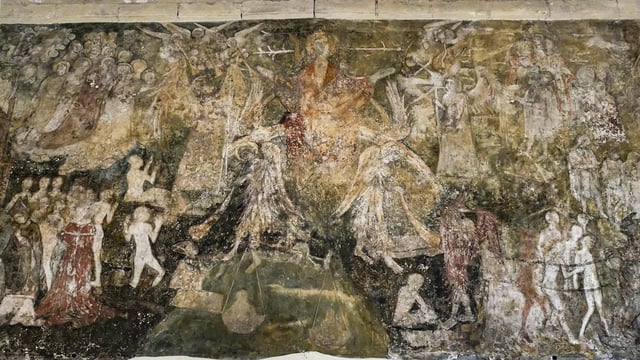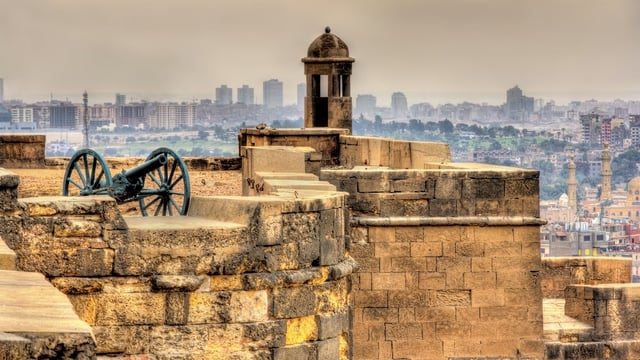Doom paintings were once a common feature in English churches. Prominently placed in the church, they were powerful visual reminders of your fate should you choose to live a life of sin. During the Reformation they were covered up or destroyed. Some have been rediscovered and restored. One of these being in the abbey church in the medieval market town of Waltham Abbey.
- Ethan Doyle White
- Last Checked and/or Updated 9 January 2023
- No Comments
- England
It is the end of days. Angels blow their trumpets and the dead rise naked from their graves. Christ sits in judgement over all humanity. Those who have lived in virtue are welcomed by Saint Peter through the gates of Heaven. Those whose lives have been marred by sin are thrown into the gaping mouth of a monstrous beast, to suffer in the Hellfire. This view of the apocalypse may have comparatively little place in today’s society, but for many medieval Christians the imagery of this foreboding event would have held a very prominent place in the imagination.

One way in which the Roman Catholic Church reminded the largely illiterate population of its teachings regarding the Day of Judgement was through wall murals now called Doom paintings. One of the best surviving examples is at the Church of Saint Thomas in Salisbury, Wiltshire. Others survive closer to London and can be more easily visited as part of a day trip from the capital. Of these, one of the finest is that at Waltham Abbey Church in Essex.

Waltham Abbey Church has early medieval origins, although much of the surviving building dates from the 12th century, reflecting the Romanesque architectural style popular in Norman England. Under King Henry II it became an Augustinian priory and later an abbey, during which time it underwent massive expansion.
In the 14th century, a chapel was appended to the south of the church. This was a guild chapel, belonging to the funeral guild of Saint Sepulchre. Late in the 15th century, the Doom painting was added to the east wall of this chapel. Perhaps it was considered particularly appropriate that those whose profession dealt with the dead would be reminded of the ultimate fate of the deceased as they prayed.
King Henry VIII’s break from the Church in Rome and the events of the English Reformation brought major changes for the nation’s churches. Waltham Abbey was dissolved in 1540, and much of it was demolished, although the older part of the structure survived as a local parish church, now used for Protestant worship. As part of these far-reaching changes, the Guild Chapel also underwent a transformation.

Under the brief reign of Henry VIII’s son, King Edward VI, medieval guilds were broken up. The guild chapel at Waltham Abbey was transformed into a schoolroom and later a storeroom. The Doom painting was concealed under a false ceiling. Throughout England, all the Doom paintings suffered similar fates, as churches were stripped of much of their ornamentation to become far plainer affairs.
This situation changed in the 19th century. The Victorians were fascinated by the Middle Ages, often thinking that it reflected ideals with which they could remedy the problems of their own industrial and urbanised society. The gothic architecture popular in the late Middle Ages experienced a resurgence, and great efforts were made to ‘restore’ medieval churches to their former splendour. As part of this, the former guild chapel at Waltham Abbey Church once again became a place of worship, this time as a Lady Chapel devoted to the Virgin Mary.

It was in this period that the false ceiling that had been added to the chapel was stripped out, revealing the Doom painting for the first time in centuries. In the 21st century, the chapel has again found a new use, this time as the church gift shop.
The Waltham Abbey Doom painting is not as large as the Doom Painting in St Thomas’s church in Salisbury, nor has it undergone the same restoration projects. The result is a painting that does look old and worn, its colours faded. While this means that we cannot appreciate the painting as people in the late 15th-century did, it is still a remarkable work of art that helps modern visitors to better understand the mindset of our medieval forebears.






